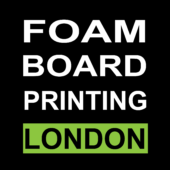When working with foam board for crafting, presentation boards, or other DIY projects, choosing the right adhesive is essential for achieving clean, long-lasting results. Foam board, also known as foam core, is lightweight, rigid, and commonly used in art, signage, framing, and educational materials. However, due to its porous and soft nature, it requires specific adhesives that won’t damage the surface or create unsightly marks.
In this article, we will discuss the best types of glue to use on foam board, including their pros and cons, to help you choose the perfect adhesive for your project.
1. PVA Glue (White Glue)
PVA glue, commonly referred to as white glue, is one of the most popular choices for foam board projects. It is widely available, easy to use, and suitable for various materials, including foam board.
Pros:
- Affordable and widely accessible: PVA glue is inexpensive and can be found in most craft stores or even general-purpose stores.
- Non-toxic and safe: It’s a safe option for children and indoor use, especially in environments like classrooms and art rooms.
- Clean finish: Once dry, PVA glue provides a clean and smooth finish without causing visible bumps or wrinkles.
Cons:
- Drying time: It requires a longer drying time, usually around 30 minutes to an hour, depending on the amount applied and environmental factors.
- Not as strong: While PVA glue is good for lighter projects, it may not offer the most robust bond for heavy-duty tasks.
2. Hot Glue
Hot glue is a strong and versatile adhesive used in many crafting and construction projects. For foam board, it can be a great option when you need an instant bond with quick drying times.
Pros:
- Quick drying: Hot glue sets within seconds, making it ideal for projects that need a fast turnaround.
- Strong bond: It provides a strong and durable bond, which is beneficial for projects that will be handled frequently.
- Works on various surfaces: Hot glue can bond foam board with other materials, such as plastic, fabric, metal, and paper, making it highly versatile.
Cons:
- Visible residue: Hot glue may leave visible residue, which can detract from the neatness of your project.
- Overheating risk: If not applied carefully, the glue can burn the foam board, especially if too much heat is applied.
3. Spray Adhesive
Spray adhesives are an excellent choice for evenly covering larger areas of foam board, especially when you’re attaching large sheets of paper, fabric, or photos.
Pros:
- Even application: Spray adhesives allow for an even, thin layer of glue without over-saturating the foam board.
- Quick and efficient: They are fast-drying, making them suitable for large projects or commercial printing applications.
- Less mess: Spray adhesives create a minimal mess compared to liquid glues.
Cons:
- May cause wrinkling: If not used correctly, spray adhesives can cause paper or fabric to wrinkle when applied to foam board.
- Potential fumes: Many spray adhesives emit fumes, so they should be used in well-ventilated areas to avoid respiratory irritation.
4. Foam Board Adhesive (Specialized)
There are adhesives specifically designed for foam board, which work exceptionally well to create a strong bond without damaging the surface.
Pros:
- Formulated for foam: These adhesives are specially designed for foam board, ensuring a perfect bond without damaging the foam.
- No warping or bending: Foam board adhesives prevent warping or bending that can sometimes occur when using non-specialized glues.
- Strong and durable: These adhesives provide a strong, lasting hold, making them perfect for heavy-duty applications.
Cons:
- More expensive: Foam board adhesives tend to be more expensive than general-purpose adhesives.
- May be harder to find: While they are available at craft stores, foam board adhesives may not be as readily available as general-purpose glues.
5. Super Glue (Cyanoacrylate)
Super glue, or cyanoacrylate, is another option for smaller foam board projects that require a fast and strong bond.
Pros:
- Fast-drying: Super glue bonds in seconds, making it ideal for quick fixes and small projects.
- Strong adhesive: It forms a durable bond, especially for attaching small decorative items to foam board.
Cons:
- Not ideal for large areas: It’s best used for small, precise applications, as it doesn’t spread evenly across larger surfaces.
- Risk of damaging foam: If applied too liberally or in excess, super glue can cause damage to the foam board.
Conclusion
Choosing the right adhesive for foam board projects depends on the type of project, the materials involved, and how quickly you need to complete your work. For most general crafting purposes, PVA glue and hot glue are excellent choices. However, for larger projects or professional use, spray adhesives or specialized foam board adhesives may offer better results. Super glue is best suited for smaller, more intricate applications.
Always consider the strength, drying time, and potential for damage before selecting the adhesive that best fits your needs.
